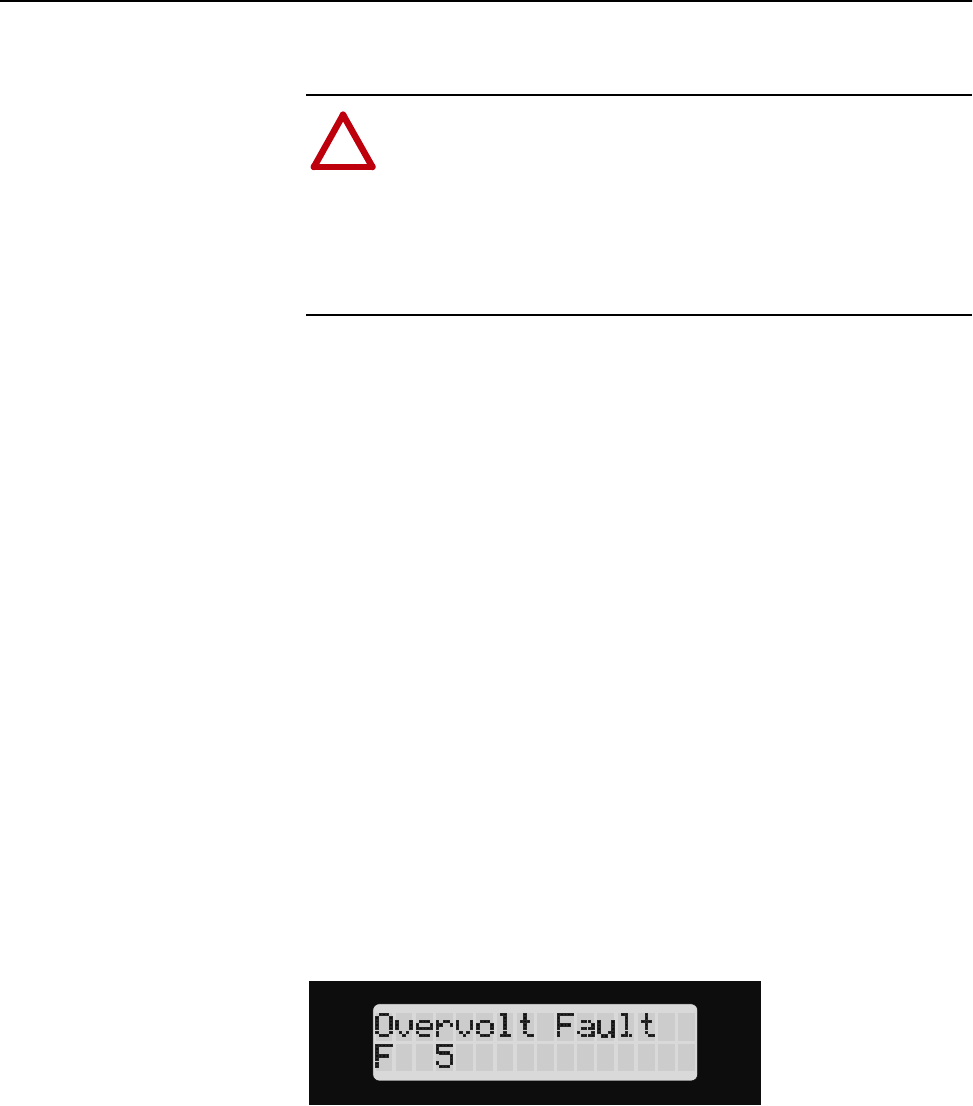Troubleshooting guide
Table Of Contents

1336 PLUS - 6.16 - September, 2001
3-2 Troubleshooting and Error Codes
Electrostatic Discharge
Precautions
Electrostatic Discharge generated by static electricity can damage the
complimentary metallic oxide semiconductor devices on various drive
boards. It is recommended that you perform these procedures to guard
against this type of damage when circuit boards are removed or installed.
• Wear a wrist type grounding strap that is grounded to the chassis.
• Attach the wrist strap before removing the new circuit board from the
conductive packet.
• Remove boards from the drive and immediately insert them into their
conductive packets.
Fault Descriptions
Fault Display
The LCD display is used to indicate a fault by showing a brief text
statement relating to the fault as shown in the following figure. The fault
will be displayed until “Clear Faults” is initiated or drive power is cycled. A
Series A (version 3.0) or Series B & up HIM will display a fault when it
occurs, no matter what state the display is in. In addition, a listing of past
faults can be displayed by selecting “Fault queue” from the Control Status
menu (See Chapter 3 of the 1336 PLUS II user manual for more
information). Refer to Table 3.A for a listing and description of the various
faults.
Figure 3.1 Fault Display
Clearing a Fault
When a fault occurs, the cause must be corrected before the fault can be
cleared. After corrective action has been taken, simply cycling drive power
will clear the fault. Issuing a valid Stop command from the HIM or Control
Interface option (TB3) will also clear a fault if the {Flt Clear Mode]
parameter is set to “Enabled”. In addition, a “Clear Faults” command can be
issued anytime from a serial device (if connected).
!
ATTENTION:
This assembly contains parts and
sub-assemblies that are sensitive to electrostatic discharge. Static
control precautions are required when servicing this assembly.
Component damage may result if you ignore electrostatic
discharge control procedures. If you are not familiar with static
control procedures, reference Allen-Bradley Publication
8000-4.5.2, Guarding Against Electrostatic Discharge, or any
other applicable ESD protection handbook.










